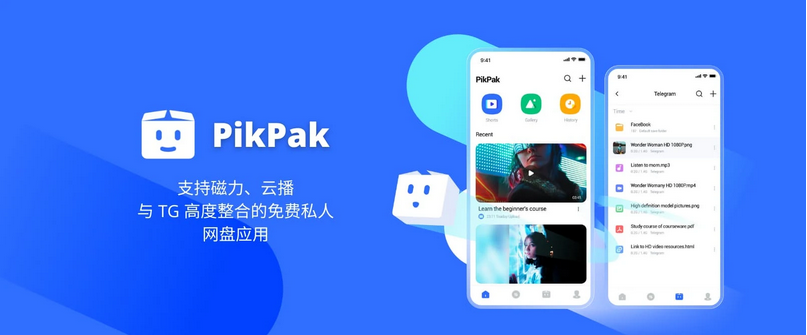
推荐阅读:
[AI-人工智能]免翻墙的AI利器:樱桃茶·智域GPT,让你轻松使用ChatGPT和Midjourney - 免费AIGC工具 - 拼车/合租账号 八折优惠码: AIGCJOEDISCOUNT2024
[AI-人工智能]银河录像局: 国内可靠的AI工具与流媒体的合租平台 高效省钱、现号秒发、翻车赔偿、无限续费|95折优惠码: AIGCJOE
[AI-人工智能]免梯免翻墙-ChatGPT拼车站月卡 | 可用GPT4/GPT4o/o1-preview | 会话隔离 | 全网最低价独享体验ChatGPT/Claude会员服务
[AI-人工智能]边界AICHAT - 超级永久终身会员激活 史诗级神器,口碑炸裂!300万人都在用的AI平台
Midjourney是一款强大的文本生成模型,其设计旨在帮助用户更快地完成任务。为了更好地使用Midjourney,需要了解如何创建高质量、美观且易于导航的菜单设计。以下是一份详细的指南,以帮助您优化Midjourney的用户体验。,,1. 确定目标:首先明确您希望为Midjourney创建什么样的菜单。是用于输入文本?还是用于生成图像或其他形式的内容?,,2. 设计布局:考虑您的菜单应包括哪些元素。这些可能包括输入字段、输出选项、交互按钮等。,,3. 颜色和字体选择:确保菜单的颜色和字体与Midjourney的整体风格一致。颜色可以增加视觉吸引力,而合适的字体可以让信息更易读。,,4. 保持简洁性:避免过度设计或复杂化菜单。简单明了的设计更容易让用户理解并快速找到他们想要的信息。,,5. 提供反馈机制:在菜单中加入反馈功能,如点击指示器或提示消息,可以帮助用户理解他们的操作是否成功。,,6. 测试和调整:测试您的菜单设计,并根据用户的反馈进行必要的调整。不断迭代和完善可以大大提高用户体验。,,通过遵循上述建议,您可以创建一个既实用又美观的Midjourney菜单设计,从而提高用户满意度和效率。创新并不意味着牺牲可用性和易用性。
Midjourney, an artificial intelligence (AI) platform that has revolutionized the way businesses communicate with their clients, offers a robust and user-friendly interface for its users. One of the key components of this interface is the menu design. In this article, we will explore Midjourney's menu design principles and provide you with a comprehensive guide on how to enhance your experience.
Key Concepts:
1、Menu design
2、Interface
3、User experience
4、AI platforms
5、Communication
6、Business
7、Client interaction
8、Interactive elements
9、Navigation
10、Typography
11、Color scheme
12、Visual aesthetics
13、Usability
14、Accessibility
15、Mobile responsiveness
16、Content organization
17、Branding
18、Integration
19、Efficiency
20、Engagement
21、Feedback loop
22、Learning curve
23、Training materials
24、Support resources
25、Collaboration tools
26、Customization options
27、Data analysis
28、Analytics dashboard
29、Reporting features
30、Real-time updates
31、Machine learning capabilities
32、Predictive analytics
33、Predictive maintenance
34、Predictive customer behavior
35、Automated workflows
36、Chatbots
37、Virtual assistants
38、Augmented reality experiences
39、Artificial intelligence decision-making
40、Natural language processing
41、Voice recognition technology
42、Image recognition technology
43、Speech-to-text conversion
44、Text-to-speech conversion
45、Personalized recommendations
46、Dynamic content generation
47、Contextual understanding
48、Semantic web integration
49、Social media integration
50、Open-source collaboration tools
Menu Design Principles:
The Midjourney Menu Design should be intuitive, visually appealing, and easy to navigate. It should also incorporate interactive elements such as buttons, links, and drop-down menus. The typography and color scheme should complement each other and create a cohesive visual aesthetic. The visual aesthetics should reflect the brand identity of the company or organization it represents. The usability and accessibility should be top priorities to ensure that all users can interact with the menu effectively.
Navigation Structure:
The navigation structure of the Midjourney menu should include sections for different functionalities offered by the platform. These sections could include "Home", "About", "Services", "Resources", "Contact", etc. Each section should have a clear and concise description of what it provides. For example, "Services" might contain information about communication solutions, business planning, client engagement strategies, etc.
Content Organization:
The content in the Midjourney menu should be organized logically and systematically. This means that the most frequently used functions should appear at the top of the menu, while less commonly used ones should be placed lower down. Additionally, sub-sections within each main section should be labeled clearly and concisely so that users can easily identify which content they need.
Integration and Customization Options:
In addition to the core functionality of Midjourney, there should be integration options available for various third-party applications and services. These integrations should allow users to seamlessly integrate their existing systems into the Midjourney platform, providing them with additional value and flexibility. Customization options should also be provided, allowing users to personalize the menu according to their specific needs and preferences.
Feedback Loop and Machine Learning Capabilities:
A feedback loop should be established between users and Midjourney's system to gather insights and data on user behavior and preferences. This feedback can then be used to improve the platform's algorithms and make future improvements accordingly. Machine learning capabilities can also be leveraged to analyze user interactions and predict future behaviors, improving the overall user experience.
Real-Time Updates and Predictive Maintenance:
Midjourney should be designed with real-time updates in mind, enabling users to receive instant notifications and alerts regarding any issues or changes in the platform. Predictive maintenance can also be implemented to anticipate and prevent potential failures before they occur, reducing downtime and increasing efficiency.
Personalized Recommendations:
Users should be able to access personalized recommendations based on their past interactions and browsing history. These recommendations should be tailored to meet their specific needs and preferences, helping them to get the most out of the platform.
Dynamic Content Generation:
Midjourney should be capable of generating dynamic content based on user inputs and preferences. This feature can help users to customize the content displayed on the platform, making it more relevant and engaging.
Contextual Understanding:
The Midjourney platform should be designed to understand and respond appropriately to contextual cues from the user. For example, if a user navigates to a new section within the platform, Midjourney should recognize the context and provide relevant content and features.
Semantic Web Integration:
Midjourney should leverage the power of semantic web technologies to enable better search and retrieval of information. This can include integrating with knowledge graphs, ontologies, and machine learning models to improve the accuracy and relevance of search results.
Social Media Integration:
Social media platforms can be integrated into Midjourney to provide users with social proof and credibility. Users can share their success stories and testimonials with others, creating a sense of community and trust.
Open-Source Collaboration Tools:
Midjourney should facilitate collaboration among users through open-source collaboration tools. This can include shared documents, project management tools, and real-time messaging features.
Conclusion:
In conclusion, Midjourney's menu design plays a crucial role in enhancing the user experience and facilitating effective communication with clients. By incorporating intuitive navigation, logical content organization, customization options, and advanced features like feedback loops, machine learning, real-time updates, and predictive maintenance, Midjourney can deliver a superior user experience that meets the needs of its diverse user base.







本文标签属性:
AI:ai电话机器人外呼系统
Midjourney菜单设计:mib菜单




